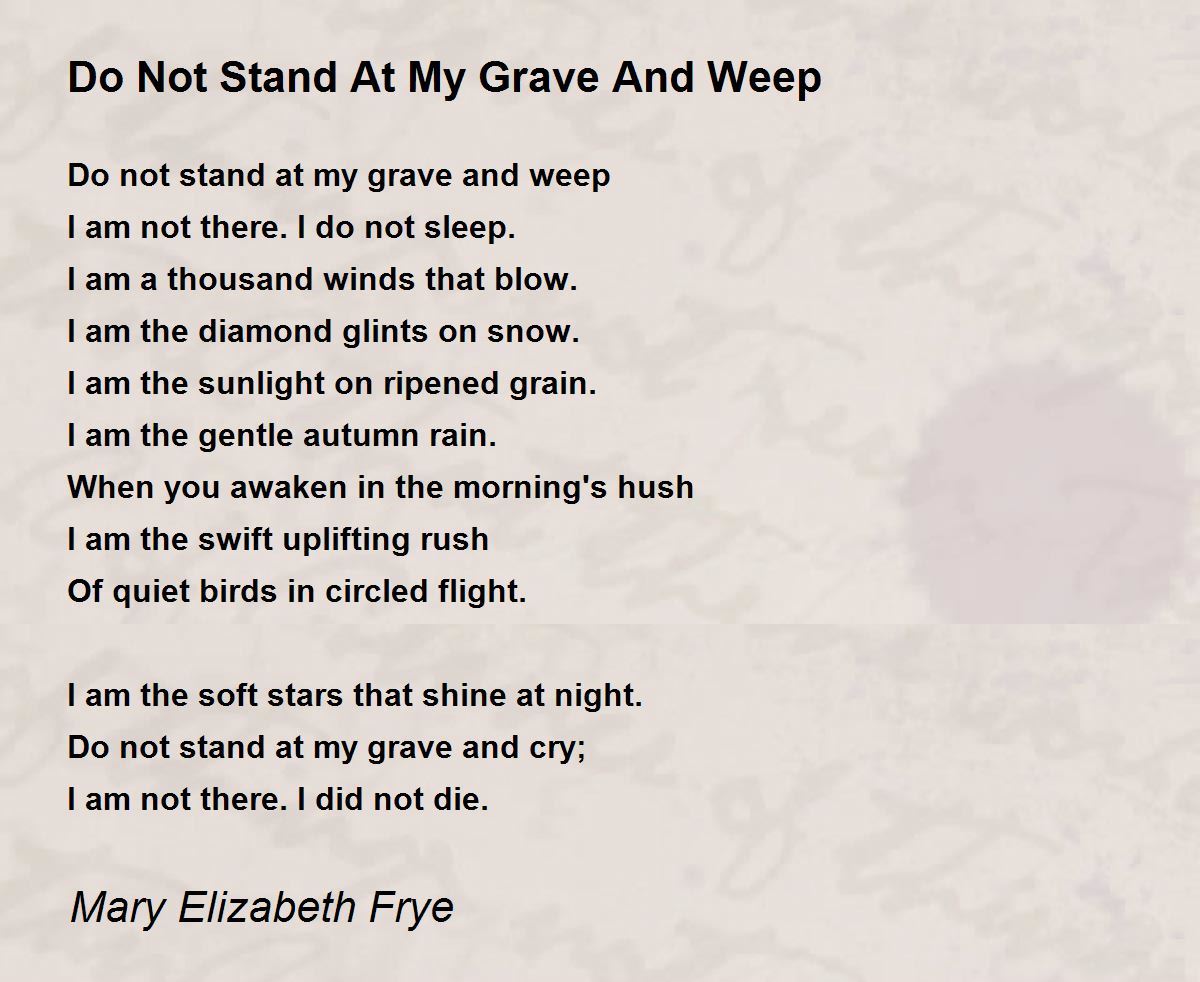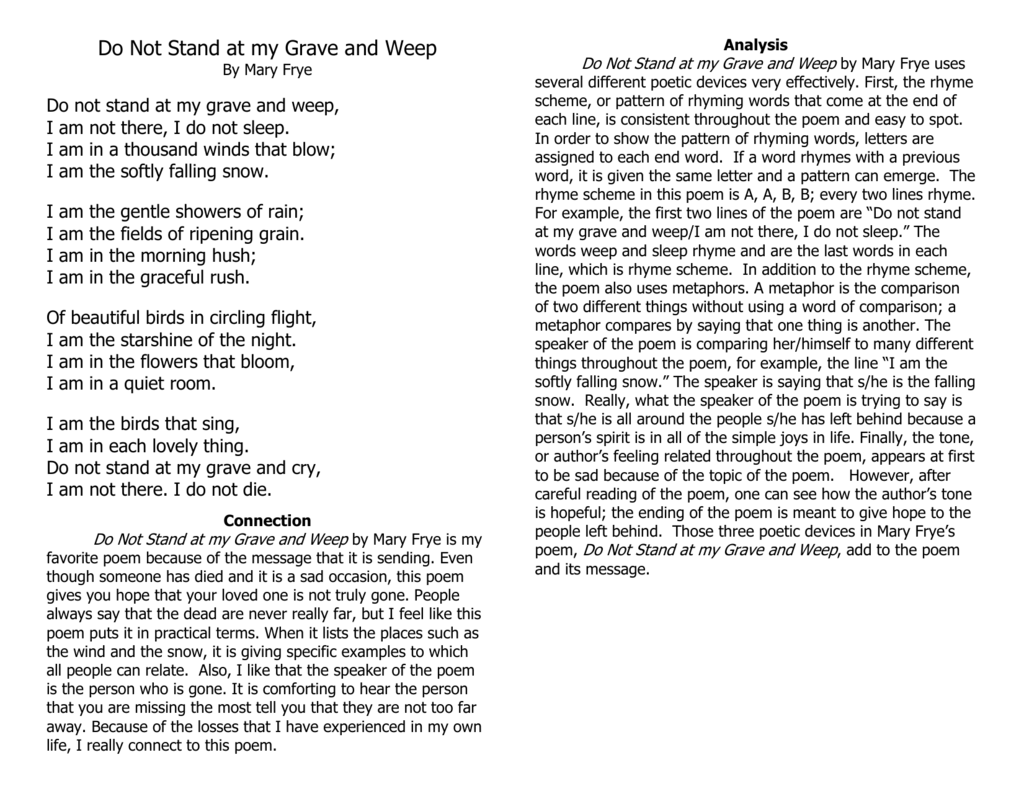
Words cannot return people, but they can show death as the birth of a new life. It is absolutely appropriate to read the poem, Do Not Stand at my Grave and Weep by Mary Elizabeth Fry, at a funeral. Where do our dearest people disappear after death? “I am a thousand winds that blow. It gave them a chance to get rid of the feeling that, if a human life could be interrupted so suddenly and so cruelly, it has no meaning at all. Yet the name of the author remained unknown to almost all the people who sought consolation. It renders an inspirational and comforting view of death. This poem has been recited many times at funerals and is noted as a death poem that brings a sense of solace to mourners.

I do not sleep” could be heard for more than 75 year, on thousands of funerals. Grief has often been an abstract idea that has been expressed in poetry but never as brilliantly as in Do Not Stand at My Grave and Weep. The line “Do not stand at my grave and weep I am not there. The poet herself could very well understand these feeling, as she lost her own mother at the age of three. The simple words of consolation, alluding to the Bible, really helped people to go through a loss. The poem Do Not Stand at My Grave and Weep, composed in the state of creative irradiation, had a certain aim: Mary Frye wanted to help a girl to go through a terrible loss, the loss of her mother. The person, for whom the poem was composed, was a Jewish girl who had not been able to see her dying mother in Germany because of anti-Semitic unrest. I am a thousand winds that blow, I am the diamond glints on snow, I am the sun on ripened.


The poem “Do Not Stand at My Grave and Weep”, composed in the state of creative irradiation, had a certain aim: Mary Frye wanted to help a girl to go through a terrible loss, the loss of her mother.


 0 kommentar(er)
0 kommentar(er)
